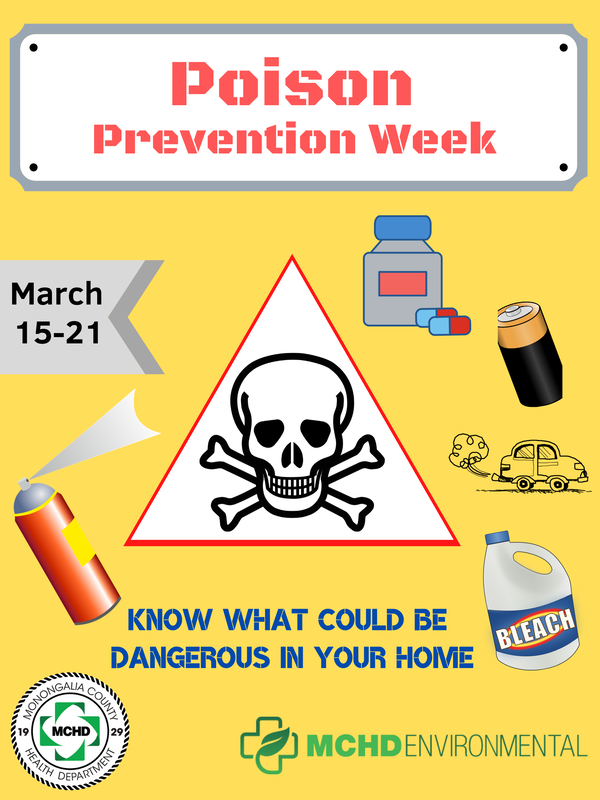Poison Prevention Week: Know what is in your home

Mar. 19, 2020
By Matt Cimino
Looking for a home project as you remain sequestered during the COVID-19 pandemic? Celebrate National Poison Prevention Week, which ends on Saturday, by poison-proofing your home.
Established by Congress in 1961, National Poison Prevention Week’s is to raise awareness, reduce unintentional poisonings and promote poison prevention.
Poison substances can range from clearly-labeled containers to everyday household items. The Centers for Disease Control and Prevention estimates that more than 300 babies, children and young adults up to the age of 19 are treated in an emergency department every day due to being poisoned.
But creating a safe environment is not just to protect children. You may think that most of your hazardous products are tucked away, but the truth is that potential poisons can be found almost anywhere.
Here are some of the most common sources of poisoning, and what you can do about them.
Cleaners kept under the kitchen sink can be especially dangerous for children. Products stored in spray bottles poison more kids than any other source of containment. Part of the appeal are the flashy, bright colors of the nozzles. If a child (or anyone) gets a cleaning product in the eyes, the best thing to do is gently rinse them for 15 minutes. While an obvious prevention method for parents may be to store them out of reach, it is equally important to be sure that the nozzle is switched to the “off” position.
Laundry “pods” are a new way people are washing clothes. These products are also often found in low cabinets or on the floor, where kids have access to them. The biggest concern is that these convenient little packages look like candy to kids. If they are swallowed, serious effects can occur quickly. Symptoms of this poisoning can include vomiting, severe breathing trouble and burns to the esophagus. Many pod containers now come with locking lids. Like spray bottles, be sure to keep them out of reach and properly seal them.
Typical cold medicines and pain relievers also have the possibility to create deadly situations in large or unmonitored doses. Acetaminophen and ibuprofen are completely safe in controlled amounts, so properly measuring amounts is important. Overdoses with both of these drugs can result in severe liver damage and stomach bleeding. For you and your children, be sure to closely follow instructions on the labels. Refrain from taking more than one type of medicine when you are sick. Accidental overdose is more likely to occur if each product contains these types of drugs.
There is a reason carbon monoxide is called the invisible killer. It is a colorless and odorless gas that is produced when typical sources of fuel are burned. Gasoline, kerosene, wood, propane and natural gas all give off carbon monoxide. The brain and heart suffer quickly when exposed to this element. Unconsciousness and death can occur if its presence goes undetected.
Regularly inspect any appliances in your house that burn traditional fuel. These include but are not limited to stoves, space heaters, wood-burners and furnaces. Never use gasoline-powered tools and generators indoors. Do not leave a car running in an attached garage. In the winter months, be sure to shovel snow that could obstruct vents and pipes that exit your house. Most importantly, install carbon monoxide detectors near every sleeping area in the home.
Be aware that some of the most dangerous substances in our lives can hide in plain sight. Take the necessary steps to keep both you and your children safe. If you come home to someone who is unconscious or not breathing, call 911 immediately. American Association of Poison Control Centers also recommends that everyone save their contact number in case of a suspected poisoning. The 24/7 line is (800) 222-1222.
Matt Cimino is a public information office intern at Monongalia County Health Department.